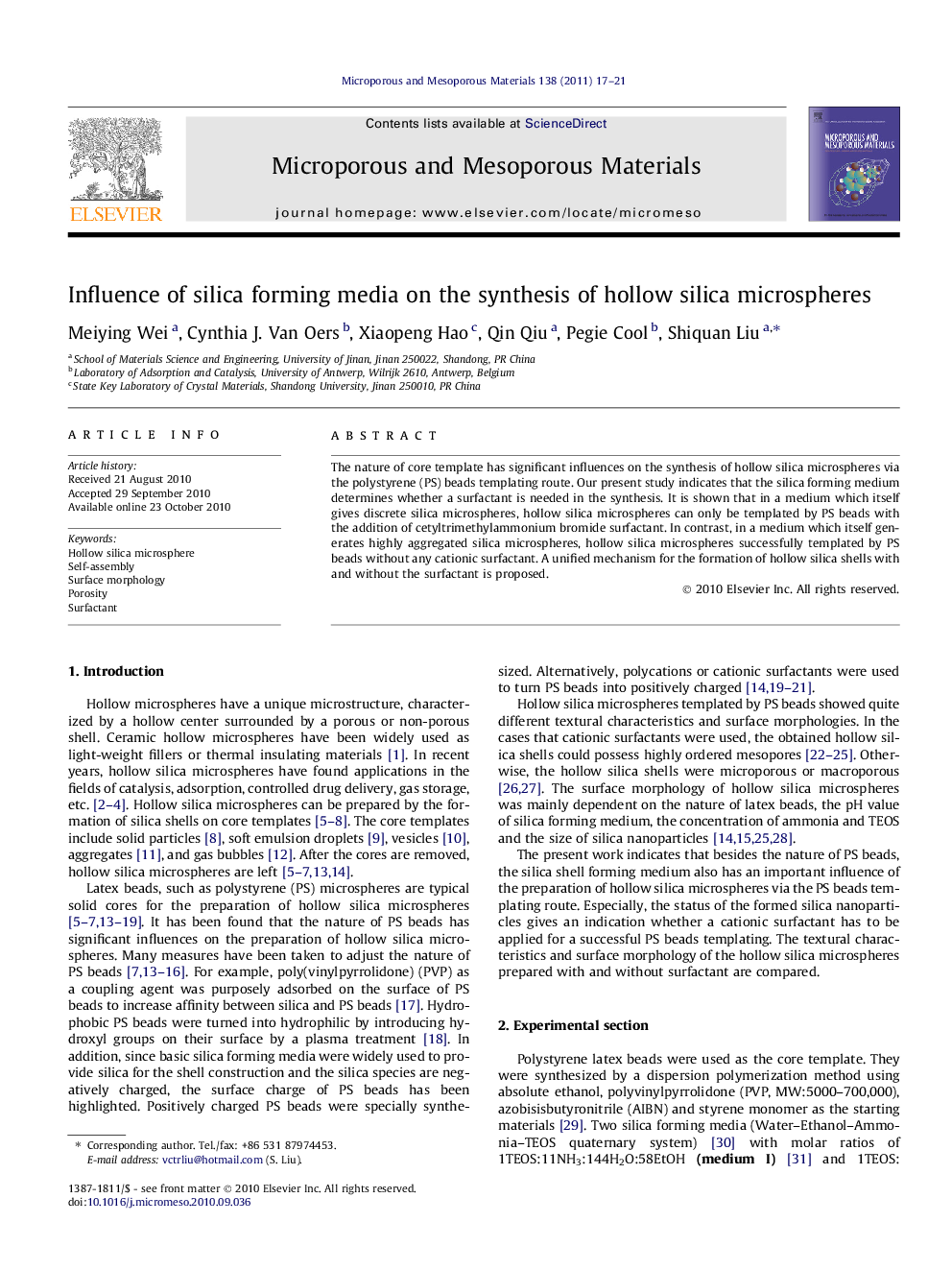| Article ID | Journal | Published Year | Pages | File Type |
|---|---|---|---|---|
| 74810 | Microporous and Mesoporous Materials | 2011 | 5 Pages |
The nature of core template has significant influences on the synthesis of hollow silica microspheres via the polystyrene (PS) beads templating route. Our present study indicates that the silica forming medium determines whether a surfactant is needed in the synthesis. It is shown that in a medium which itself gives discrete silica microspheres, hollow silica microspheres can only be templated by PS beads with the addition of cetyltrimethylammonium bromide surfactant. In contrast, in a medium which itself generates highly aggregated silica microspheres, hollow silica microspheres successfully templated by PS beads without any cationic surfactant. A unified mechanism for the formation of hollow silica shells with and without the surfactant is proposed.
Graphical abstractHollow silica microspheres can be templated by polystyrene beads either with or without the addition of surfactant, depending on the silica forming medium used in the synthesis.Figure optionsDownload full-size imageDownload as PowerPoint slideResearch highlights► Different silica forming media. ► Discrete and aggregated silica microspheres. ► Hollow silica microspheres synthesized with and without surfactant. ► Different surface morphology.
